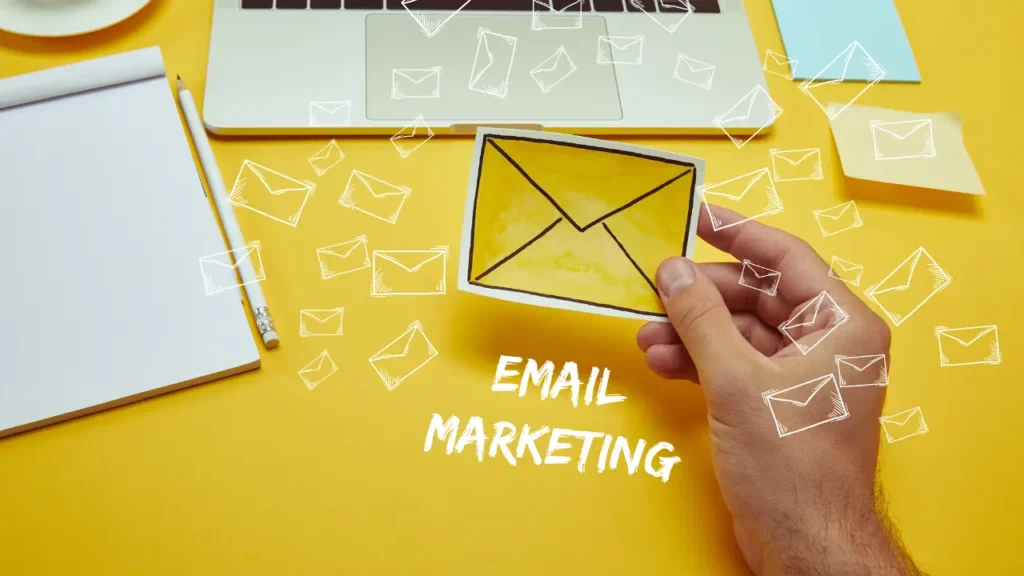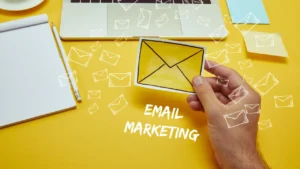Email marketing is a powerful digital marketing strategy that involves sending targeted emails to a list of subscribers to promote products, services, or brand messages. It is one of the most cost-effective and efficient ways to engage with an audience, nurture leads, and drive conversions.
Benefits of Email Marketing
1. Cost-Effectiveness
Compared to other digital marketing channels, email marketing is relatively inexpensive. There are minimal costs involved in setting up email campaigns, making it an excellent choice for businesses of all sizes.
2. Direct and Personalized Communication
Email marketing allows businesses to communicate directly with their audience. By segmenting email lists, companies can personalize content and increase engagement rates.
3. High ROI (Return on Investment)
According to various studies, email marketing has an impressive return on investment. For every dollar spent, businesses can earn an average of $42 in return, making it a highly lucrative channel.
4. Automation and Scalability
With email automation tools, businesses can schedule campaigns, send follow-ups, and personalize messages at scale without manual intervention.
How Email Marketing Works
graph TD;
A[User Subscribes] -->|Opt-in Form| B[Email List]
B --> C[Segmentation]
C --> D[Personalized Email Campaign]
D --> E[Automated Sequences]
E --> F[User Engagement & Conversions]
F -->|Data Analysis| G[Optimized Strategy]
Types of Email Marketing Campaigns
1. Newsletter Emails
Regularly scheduled emails that provide updates, news, and valuable insights to subscribers.
2. Promotional Emails
Emails designed to promote specific offers, discounts, or new products.
3. Transactional Emails
Automated emails triggered by user actions, such as order confirmations, password resets, or shipping notifications.
4. Re-engagement Emails
Emails targeted at inactive subscribers to encourage them to return and engage with your brand.
5. Drip Campaigns
A series of pre-scheduled emails designed to nurture leads and guide them through the sales funnel.
Best Practices for Effective Email Marketing
1. Build a Quality Email List
Avoid purchasing email lists. Instead, grow your list organically by offering valuable incentives such as free eBooks, discounts, or exclusive content.
2. Segment Your Audience
Group subscribers based on their behaviors, preferences, and demographics to send personalized and relevant content.
3. Craft Engaging Subject Lines
The subject line is the first impression of your email. Keep it short, compelling, and relevant to boost open rates.
4. Use a Responsive Design
Ensure your emails are mobile-friendly and look great on all devices to maximize engagement.
5. Optimize for Deliverability
Avoid spammy words, use a reputable email service provider, and encourage subscribers to whitelist your email address.
6. A/B Testing
Test different subject lines, content formats, and sending times to determine what works best for your audience.
7. Monitor and Analyze Performance
Track key metrics like open rates, click-through rates, conversion rates, and unsubscribe rates to refine your strategy.
Tools
- Mailchimp
- HubSpot
- ConvertKit
- GetResponse
- ActiveCampaign
- Sendinblue
Conclusion
Email Marketing remains one of the most effective digital marketing strategies. By implementing best practices, using automation, and personalizing content, businesses can maximize engagement, drive conversions, and achieve long-term success. Whether you are a small business or a large corporation, investing in a well-structured email marketing strategy can yield exceptional results.




